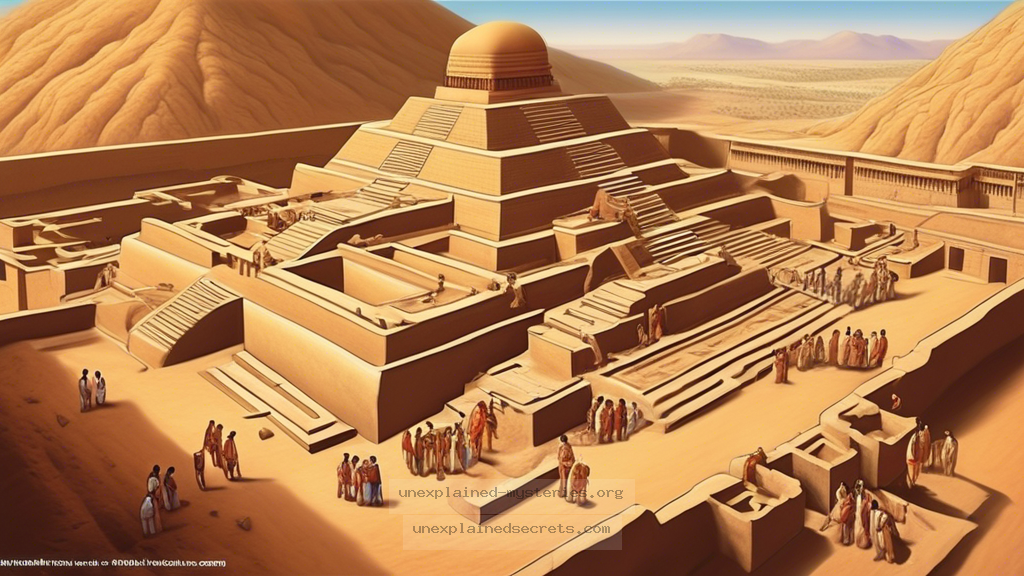What Happened to the Advanced Civilization of the Indus Valley?
What Happened to the Advanced Civilization of the Indus Valley?
The mystery of the Indus Valley Civilization, one of the world’s earliest urban societies, continues to captivate historians, archaeologists, and enthusiasts alike. Spanning the northwestern regions of South Asia, this civilization flourished around 2500 BCE and displayed remarkable advancements in urban planning, architecture, and social organization. Yet, despite its achievements, the civilization mysteriously declined and ultimately vanished. This post will explore the enigma surrounding the disappearance of the Indus Valley Civilization, examining historical context, core theories, and ongoing research efforts.
Historical Context of the Indus Valley Civilization
The Indus Valley Civilization (IVC) was one of the three early cradles of civilization, alongside Mesopotamia and Ancient Egypt. It was characterized by well-planned cities such as Mohenjo-Daro and Harappa, which featured sophisticated drainage systems, standardized weights and measures, and advanced craft production. The civilization thrived between 2600 and 1900 BCE, covering parts of modern-day Pakistan and northwest India.
What sets the IVC apart from other ancient societies is its remarkable urban planning and architecture. The cities were built on a grid pattern, with streets laid out at right angles, a testament to the advanced organizational skills of the people. Archaeological evidence also suggests a high degree of social organization, as the cities were equipped with large public baths and granaries, indicating a level of cooperation and communal living.
Core Concepts Surrounding the Decline
The decline of the Indus Valley Civilization remains one of the great unsolved mysteries of archaeology. Several core theories have emerged, each attempting to explain the factors that may have contributed to its downfall. Here are the most widely accepted explanations:
- Climate Change: Some researchers propose that a shift in climate could have led to a decrease in agricultural output. A drying trend may have reduced the flow of rivers crucial for irrigation, leading to food shortages.
- Natural Disasters: Earthquakes, floods, or other natural catastrophes could have devastated cities and disrupted trade routes, contributing to the civilization’s collapse.
- Societal Decline: Internal strife or social upheaval might have weakened the societal structure, leading to abandonment of cities as people fled to more hospitable regions.
- Invasion and Migration: There is speculation that invading groups, perhaps the Indo-Aryans, could have contributed to the decline, although evidence for this theory is scant.
Evidence Supporting Climate Change Theory
One of the most compelling theories involves climate change. Recent studies of ancient sediment layers suggest that the region experienced significant shifts in weather patterns around the time the Indus Valley Civilization declined. Research indicates that around 2000 BCE, the monsoon patterns that supported agriculture began to weaken, leading to prolonged droughts.
Additionally, pollen analysis from sediment cores has revealed shifts in vegetation that coincide with the civilization’s decline. The decrease in moisture likely reduced crop yields, causing food shortages and stress within urban centers. As agriculture faltered, the interconnected trade networks that sustained the cities would have also collapsed, leading to a cascading effect on the economy and society.
Natural Disasters and Their Impact
Natural disasters are another plausible explanation for the decline of the Indus Valley Civilization. Evidence of seismic activity in the region suggests that earthquakes could have played a role in destabilizing urban centers. Archaeological findings indicate that many cities were abandoned around the same time, which might imply a sudden cataclysmic event.
Moreover, the region is prone to flooding from rivers such as the Indus and Ghaggar-Hakra. Such floods could have caused immediate destruction, leading to loss of life and property. The cumulative effects of these disasters may have compounded the challenges faced by the civilization, leading to its eventual decline.
Societal Factors and Internal Strife
Another dimension to consider is the internal dynamics of the civilization itself. There is evidence that suggests a highly stratified society, which may have created tensions between different social classes. As resources dwindled due to climate change or natural disasters, competition for food and resources could have led to social unrest.
Archaeological sites have revealed signs of violence and warfare, which raises questions about the social fabric of the civilization. The decline could have been hastened by internal conflicts, leading to the abandonment of cities as people sought refuge in less populous areas.
Comparative Analysis: Other Ancient Civilizations
To better understand the decline of the Indus Valley Civilization, it is useful to compare it with other ancient civilizations that faced similar challenges. For instance, the Maya civilization experienced a significant decline due to environmental factors and social upheaval, suggesting that complex societies are often vulnerable to multiple stressors.
| Civilization | Decline Factors | Time Period |
|---|---|---|
| Indus Valley | Climate change, natural disasters, social strife | 1900 BCE |
| Maya | Drought, warfare, agriculture collapse | 800-1000 CE |
| Roman Empire | Economic crises, barbarian invasions, internal corruption | 476 CE |
Common Misconceptions About the Indus Valley Civilization
Several misconceptions persist regarding the Indus Valley Civilization and its decline. One common belief is that the civilization was entirely wiped out by invaders. However, evidence suggests that many cities were abandoned gradually rather than destroyed in a singular event.
Another misconception is that the Indus Valley people were primitive. In reality, their achievements in urban planning, metallurgy, and trade indicate a highly developed society. The lack of deciphered written records often leads to underestimating their culture’s complexity.
Best Practices for Investigating Lost Civilizations
For those interested in researching lost civilizations like the Indus Valley, a multidisciplinary approach is essential. Here are some best practices:
- Collaboration: Work with experts from various fields, including archaeology, anthropology, and environmental science, to gain a comprehensive understanding.
- Field Research: Engage in fieldwork, utilizing modern technology such as ground-penetrating radar and satellite imagery to uncover new evidence.
- Public Engagement: Foster public interest and education through workshops, lectures, and social media to promote awareness of ancient civilizations.
Future Developments and Ongoing Research
Research into the Indus Valley Civilization is ongoing, with new techniques and technologies continually revealing fresh insights. Recent advancements in DNA analysis and isotopic studies are helping to paint a clearer picture of the people who lived in this ancient society and the environmental conditions they faced.
Moreover, interdisciplinary studies that combine archaeology, climatology, and sociology are beginning to yield promising results. As researchers continue to analyze ancient artifacts and environmental data, we may soon uncover new explanations for the mysteries surrounding the Indus Valley Civilization’s decline.
Conclusion
The decline of the Indus Valley Civilization remains a multifaceted mystery, with no single explanation capable of fully accounting for its disappearance. The interplay of climate change, natural disasters, social strife, and possibly invasion paints a complex picture of a civilization that once thrived and then faltered. By examining historical contexts, theories, and ongoing research, we can better appreciate the achievements of the Indus Valley people and the lessons their story holds for us today.
Other Articles
Recent Posts
- What Happened to Flight MH370? The Conspiracy Theories That Still Haunt Us
- What Secrets Lurk Within the Walls of the Infamous Trans-Allegheny Lunatic Asylum?
- What Evidence Supports the Existence of Bigfoot in the Pacific Northwest?
- What Happened to the Indus Valley Civilization? Unraveling the Mysteries of Ancient Urban Life
- Can Telepathy Be Scientifically Proven Through Laboratory Evidence?







